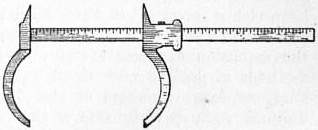of craniometry, make its appearance; such nevertheless was the
case, much to the detriment of craniometric science, which for a
time seems to have become purely empirical.
The third subdivision of craniometric researches is one in which the field of comparison is still further narrowed. For herein the various sub-racial types such as the dark and fair Europeans are brought together for the purposes of comparison or contrast. But although the range of research is thus narrowed and restricted, the guiding principles and the methods remain unchanged. In this department of craniometry, Anders Retzius has gained the foremost place among the pioneers of research. Retzius’s name is, as already mentioned, associated not with any particular angle or angular measurement, but rather with a method of expressing as a formula two cranial dimensions which have been measured and which are to be compared. Thus for instance one skull may be so proportioned that its greatest width measures 75% of its greatest length (i.e. its width is to its length as three to four).
 |
| From Tylor's Anthropology, by permission of Macmillan & Co., Ltd. |
| Fig. 4.—Top view of skulls. (A) Negro, index 70, dolichocephalic; (B) European, index 80, mesaticephalic; (C) Samoyed, index 85, brachycephalic. |
This ratio (of 75%) is termed the cephalic or breadth-index, which in such an instance would be described as equal to 75. A skull providing a breadth-index of 75 will naturally possess very different proportions from another which provides a corresponding index equal to 85. And in fact this particular index in human skulls varies from about 58 to 90 in undistorted examples (fig. 4). Such is the general scheme of Retzius’s system of classification of skulls by means of indices, and one of his earliest applications of the method was to the inhabitants of Sweden. One striking result was to exhibit a most marked contrast in respect of the breadth-index of the skull, between the Lapps and their Scandinavian neighbours, and thus a craniometric difference was added to the list of characters (such as stature, hair-colour and complexion) whereby these two types were already distinguished. Since the publication of Retzius’s studies, the cephalic or breadth-index of the skull has retained a premier position among its almost innumerable successors, though it is of historical interest to note that, while Retzius had undoubtedly devised the method of comparing “breadth-indices,” he always qualified the results of its use by reference to other data. These qualifications were overlooked by the immediate successors of Retzius, much to the disadvantage of craniometry. In addition to the researches on the skull forms of Lapps and Swedes, others dealing with the comparison of Finns and Swedes (by Retzius) as well as the investigation of the form of skull in Basques and Guanches (by Broca) possess historic interest.
 |
| Fig. 5.—Callipers used in Craniometry, Professor Martin’s (P. Hermann, Zürich) model. |
 |
| Fig. 6.—Flower’s Craniometer as modified by Dr W. L. H. Duckworth. |
Thus far little or nothing has been said with regard to instruments. Camper devised a four-sided open frame with cross-wires, through which skulls were viewed and by means of which accurate drawings could be projected on to paper. The methods of Retzius as here described require the aid of callipers of various sorts, and such instruments were quickly devised and applied to the special needs of the case. Such instruments are still in use, and two forms of simple craniometer are shown in the accompanying illustrations (figs. 5 and 6). For the more accurate comparison required in the study of various European types, delicate instruments for measuring angles were invented by Anthelme in Paris (1836) and John Grattan in Belfast (1853). These instruments enabled the observer to transmit to the plane surface of a sheet of drawing paper a correct tracing of the contour of the specimen under investigation. A further modification was devised by the talented Dr Busk in the year 1861, and since that date the number and forms of these instruments have been greatly multiplied. With reference to contributors to the advance of knowledge in this particular department of craniometry, there should be added to the foregoing names those of Huxley, Sir W. H. Flower and Sir W. Turner in England, J. L. A. de Quatrefages in France, J. C. G. Lucae and H. Welcker in Germany. Moreover, the methods have also been multiplied, so that in addition to angular and linear measurements, those of the capacity or cubical contents of the cranium and those of the curvature of its surface demand reference. The masterly work of Cleland claims special mention in this connexion. And finally while two dimensions are combined in the cephalic index of Retzius, the combination of three dimensions (in a formula called a modulus) distinguishes some recent work, although the employment of the modulus is


